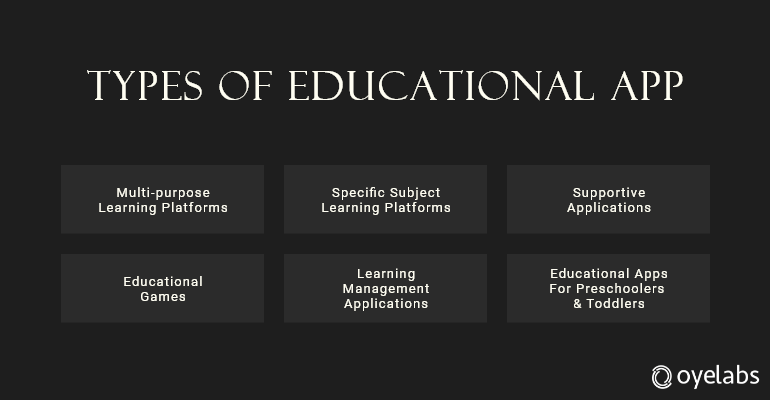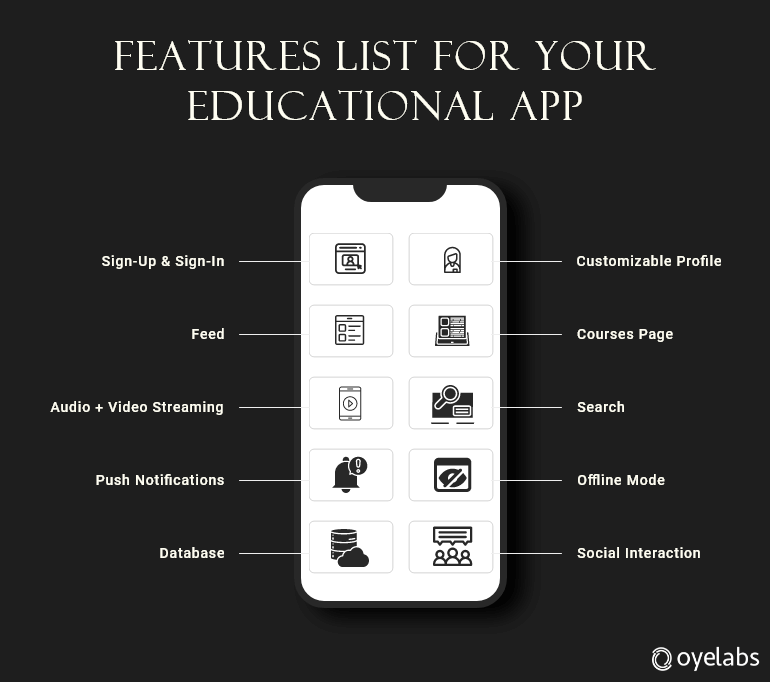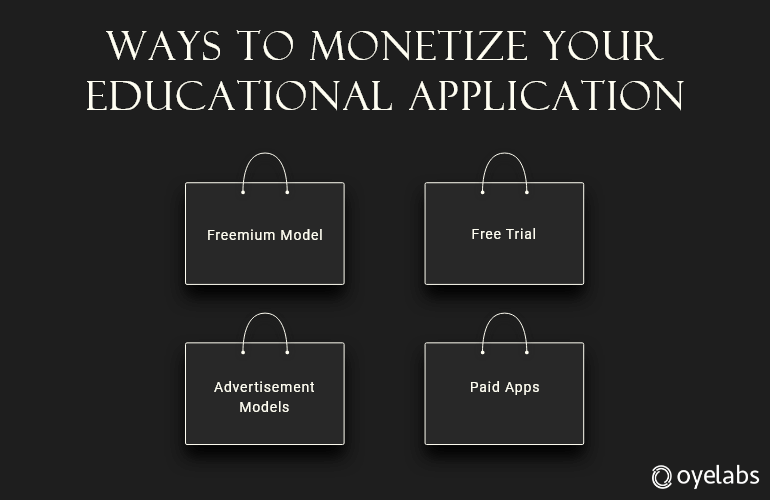How To Create A Masterclass
Introduction
Almost all our familiar lives have been altered by the worldwide pandemic and accompanying lockdown. Unfortunately, several businesses have limited or closed their business operations. Others have been adapted to the remote working model. Training is one of the radical improvements that have taken place. Despite the long-running remote learning format, an unexpected and convincing shift has nonetheless become a major challenge. But these challenges could prove to be the mask of the demand for software for education. It's a promising step to learn about making an instructional app.
The present crisis and the increasing success of all forms of software have contributed to an increasing interest in the creation of educational applications. Educational apps are the way to build and make a profit for society.
During the lockdown, education technologies received the greatest boost. EdTech's providers have expanded their user base in the last decade because universities, schools and providers of instruction have failed to migrate on-line and users have expanded their use of web content because of the affordability of time.
Out of all the eLearning or EdTech platforms, for this article, we will be focusing on Masterclass.
So, What Is Masterclass App?
The Masterclass is an online EdTech business that delivers courses taught by popular people to millions of customers. It was formed by David Rogier and Aaron Rasmussen in 2015. Their website features a diversity of videos on about every subject – Gordon Ramsay for Cooking and Tan France for Styling and Fashion for example. So, their model is pretty simple – Masterclass seeks to take advantage of the success of these prominent personalities in its forum.
What Makes Masterclass Unique?
Because of their impressive video output efficiency, MasterClass is distinct from the other online training platforms. The team from MasterClass invested much time on the course series with each teacher. They put lots of thinking into the world, too.
You would have a rare insight into the home of Malcolm Gladwell with his library and home bar, for instance. James Patterson offers useful advice for writing from his local cafe (which you must get after hours so there is no one to contribute to the quality). The kitchen of Gordon Ramsay is fantastic.
The lighting and audio standard in both groups is clear. You automatically feel relaxed as you sit down and watch a lecture. The entire scene is a pleasure.
The MasterClass is even different from world-class teachers. They are taught space exploration by Chris Hadfield. From Martin Scorsese, you will practise filmmaking. The flower taught Judy to write. Electronic music production class on Masterclass has an interesting class by deadmau5.
READY TO LAUNCH YOUR APP?
With Customized On-Demand Solutions by OyeLabs
Why e-learning platforms like Masterclass are gaining popularity?
For over a hundred years the teaching took place in colleges, universities or other classrooms. The technology has reformed the way students experience education in an immersive process after they leave the classroom and in particular their versatility.
The eLearning platforms offer a number of benefits. Some of them are:
- Accessibility & Affordability
Once a computer science professor from Stanford wanted to give online courses in a variety of his subjects. He certainly expected a handful of 10,000 students. He didn't expect this amount to reach a hundred per course, however.
The world is enormous: there are people from diverse nations, cultures, physical and financial power, and much more. Technology has provided access to and research capabilities. It's what you need to figure out what you want to find and look for the app.
- Enhanced Engagements
Around 75 % of students wish to learn something different right after classes are finished. They don't therefore treat studying as dull. Indeed, if associated with anything so popular as a smartphone, it comes naturally.
It enables students to sustain contact between them and a training organisation or brand or whatever the provider is through immersive apps that are easy to use.
- Wide Outreach
More than 63 per cent of students use smartphones every day to study. You can meet various people around continents and oceans by tapping into the Mobile Learning space.
- Collaboration
Apps provide means of contact 24-hours a day with their classmates and teachers that affect productive time spent on the app and teaches them the fundamentals of networking.
- Continuousness
ComScore reports users to sit on their devices for about three hours a day. The mobile application gives you the ability to study any time you like. It transforms learning into an ever-changing process. You should make the app your source of amusement by studying instead of being a short term partnership.
- Approachability
Masterclass makes it easy for novices to save the truck, to begin with, the basics and improve as the course progresses. Their lectures discourage inexperienced learners from being threatened.

Types Of Educational Apps
The third most popular group in education applications (8.48%) for downloads. And while there are people who can only link education with a boring school curriculum, the reverse is real. All those playing piano, mastering languages, solving puzzles and studying online.
There are also no more and more fascinating ideas in the creation of the education app. The most distinctive styles of smartphone instructional applications to date are:
- Multi-purpose Learning Platforms
Education channels are not limited to either one course or one science area. One can find and participate in any course, regardless of age, financial condition, ethnicity or other barriers (e.g., Google Classroom, iTunes U, Coursera, Stepik etc.) even in full-scale graduate programmes.
Let's take the example of Coursera, which began as an online forum for Stanford alone and became the hub of great educational possibilities. Thus, while it sounds amazing, it takes a lot of resources, time and database ability to produce a comparable compatible product.
- Specific Subject Learning Platforms
In several applications, there is only one specific subject being taught varies from Duolingo for learning new languages to Yousician to learn guitar.
- Supportive Applications
These are not teaching applications. Rather, they add to the process of research. Some applications on the other hand deal with minor tasks such as solving or fixing the syntax written in a notebook.
- Educational Games
It's good to learn, but better to interactively learn. Training the brain in a game world helps students to take heavy items away while also taking something different.
- Learning Management Applications
There are apps that can be used for their purposes either jointly by members of an educational establishment or independently by students (e.g., school student, canvas student, etc.). They manage the formalities and promote contact between school and student in terms of personal calendars, attendance tests, sending works, graduation etc.
- Educational Apps For Preschoolers & Toddlers
The little child's brain functions differently at school from that of the elderly. They have a shorter emphasis and are also in the early stages of growth. Special apps for children aged 0-5 are vivid, spirited and creative in order to attract the attention of children and ensure they learn how to enjoy themselves.
The Market For Educational Applications
Have you seen how many participants engage in an online study? During the quarantine, have you tried some?
During recent years, online education has turned into a movement that seems to have a very promising future, moved by the pandemic. Developers of such tools know that this sector will produce amazing profits.
An educational sector is also a forum for exploring the latest technical solutions and producing massive revenues. The education app industry is projected to expand by over 46 billion dollars by 2024.

Must-Have Features List For Your Educational Application
The application process typically consists of the same phases: planning, design, feature selection, testing and rollout.
There is no difference between educational apps as well. They will contain the most diverse characteristics and learning modules but the most basic characteristics should be:
- Sign-Up & Sign-In
While it is difficult to teach imagination, it can definitely be nurtured. Look for a schedule that fits you. Routines can be positive because they improve a balanced, imaginative mind; if they truly discourage you from becoming imaginative, they may be detrimental. Though disrupting your routine from time to time in order to compel new ways of thinking is fine, what if new things have become part of your routine? Those who talk poorly about routine obviously have not established a routine which takes them on an inner path of rising. The biggest point is to explore creative rituals with which you are more creative.
- Customizable Profile
Students are the most critical aspect of the education software culture. You should be able to get a profile page with information on who you are, what faculty or degree, what courses you take, which activities and access to your grades (which would also be fantastic if it showed approximate GPA).
This feature will take 115 to 140 hours for your software developers to build.
- Feed
Present consumers the abrupt changes to the timetable depending on the lecturers' lectures or lectures.
130 hours for the development of this kind of a page.
- Courses Page
Each lesson or course would definitely have its own page with a comprehensive timetable, classes, agendas, lecturers' information, a list of students attending the course as well as any additional information.
It's going to take 80 hours for development.
- Audio + Video Streaming
The process behind streaming is that the current stream goes to the server where it is converted to the person viewing the stream. The video will also be taken and preserved if necessary. However, developers define the time limits for storage and focus on the capacity of servers for storage and processing.
In addition to real-time online classes, users need to be able to access the lecture or listen to the radio content that is used in their curriculum. It would also be easier to think in advance about the server component.
A basic MVP would take roughly 80 hours to the frontend and 80 to the back-end. But up to 600 hours will be needed to create the highest-quality steam feature.
- Search
Any students choose to try out their friends' courses or learn what they will have next year. To build a comprehensive search with multiple features, the user experience will be enhanced.
It took 110 hours of time.
- Push Notifications
All the least changes in their study/teaching processes such as scheduling adjustments, new tasks and grades, deadlines, etc. are told to the students and lecturers.
It takes approximately 90 hours to build push notifications.
- Offline Mode
Right, mode offline. Provide the students with downloadable lesson resources, saved answers to exams … the right to access the needed data offline in order that they can't complain that the link was bad so that their work hasn't been checked.
It takes approximately 60 hours to create an offline mode.
- Database
The easiest thing to do is retain all records about the present, previous and future classes, personal information about each student and the process of their education and all course materials. The information is provided in the data bank.
Before you do so, you can not measure the time taken to create a database effectively. It can only take months to set it up in real life.
- Social Interaction
If your app gets successful, you can transform it into a tiny social network that can connect contacts, interact and share achievements. Creates an educational app that takes this aspect into consideration.
Things To Consider While Making Your Educational Application
- Gamification
You probably consider incorporating a game feature in the event you intend to build an interactive app for children. Gamification, however, is similarly sufficient for adult uses. The notion that "gaming is for girls" was discarded years ago. Gaming components allow students, whatever their age, to remain concentrated and involved.
Gamification can take various forms:
- Activities and tokens which display the success of students
- A storey which users explore when they enter the ladder of learning
- Lesson resources available with cartoons or funny video clips
Or if you start making an educational game app you can come up with a whole different feature. Brainstorms can help you find a unique feature with game elements during the validation stage.
- Localisation
Learning is universal, and most educational applications can be used globally. That's why an educational app is worth investing in quality localisation.
- Visuals & Sounds
Many education device developers believe that applications should use vivid colours and pictures for learners. Our brains are designed to help memorise things by combining the material with visual content.
Audio consistency is a must for applications for language learning. Audio should be captured by native speakers for these applications with preferably a range of local accents (see an illustration of Memrise). It depends on instructional material for other types of applications, but most subjects benefit from audio.
- AR & VR
It's fair to take a while to consider whether virtual (VR) and augmented reality (AR) are costly features to introduce. However, VR and AR are hot topics today and will help it stand out in the app shop by applying an edge to the app.

How To Monetize Your Educational Application
When it comes to monetizing your educational application, there are a number of methods which you can use. But the most successful 3 methods are listed below:
- Freemium Model
Freemium is the most popular model of monetization for educational applications — you give your customers a condensed version and recommend they purchase the whole version if they want. The free version should also be completely available, though.
A series of apps (DuoLingo, Memrise) provide high-quality features. For enhanced functionality, users must subscribe. For starters, DuoLingo offers ad-free, offline access, boundless hearts, and more.
Let's take Memrise as an example again: The free edition has all the same lessons as the premium ones, but you would have access to extras like an automatic pronunciation search and a grammar bot if you premium the membership fee. These features are not acutely needed for every student, particularly if they use the app as a help instead of a major source, but nevertheless, provide good work.
- Free Trial
Another popular model of monetisation for educational software developers is offering a free trial. This model is used by Elevate, the popular brain training app. You offer users complete access for a short period of time to all app functionality with a free trial and invite them to pay if they want to proceed. Usually, two weeks is enough to get to know an app, but it's not time to get bored.
- Advertisement Models
Announcements are the most common monetization model since the platform is free of charge to consumers. DuoLingo also claims that the ad has to be watched in order to keep schooling open.
Ads can be used in an instructional app carefully as a monetization model. Interruption of an ad lesson disturbs the attention of the customer and is seen as a significant downside. You will make strategic suggestions based on market analysis in your education software creation business when you plan to use your ads.
- Paid Apps
The principle is straightforward. You can set a fair price and earn money from a premium edition of the education application by providing an appealing interface and exciting functionality. This is a viable choice for providers of education services with an existing organisation of clients already. Schools, colleges and course owners will employ software developers for education, extending their scope and facilitating the learning experience of their students.
Cost Of Developing An Educational Application
A tonne needs to be taken into account in calculating the cost of an app for the learning app growth. Is your software going to have to allow audio replay, for example? Save computer games, few applications involve audio integration as well as research applications. It is also strongly recommended for education applications to develop software for both Android and iOS immediately since students with both types of devices typically have both classrooms.
Anything like this is the main production team for an educational software development process:
- Manager of the project: 1
- Designer UI / UX: 1
- Developers of iOS: 1-2
- developers of Android: 1–2
- QA expert: 1
- Audio designer: 1
Localization adds to the expense of an instructional app another dimension. If you plan to do this, either VR or AR incorporation. You would also need to train mother-tongue speakers to capture terms and sentences if you are doing a language learning test. There are also additional options for various types of applications. However, if we look to improve the core product, training app creation services would cost about $48,000.
Frequently Asked Questions for building an app like Masterclass (FAQs)
Que. What are some apps similar to masterclass?
Ans. Some apps like MasterClass are Udemy, Coursera, Linkedin Learning, Creative Learning and Khan Academy among others.
Que. How does MasterClass make money?
Ans. MasterClass makes money by charging students a subscription fee to gain unlimited access to their courses.
Que. What is MasterClass's Valuation?
Ans. During its latest Series E, which the company announced in May 2020, MasterClass was able to amass a valuation of over $800 million.
How To Create A Masterclass
Source: https://oyelabs.com/how-to-create-educational-app-like-masterclass/
Posted by: dellingerknobson.blogspot.com

0 Response to "How To Create A Masterclass"
Post a Comment